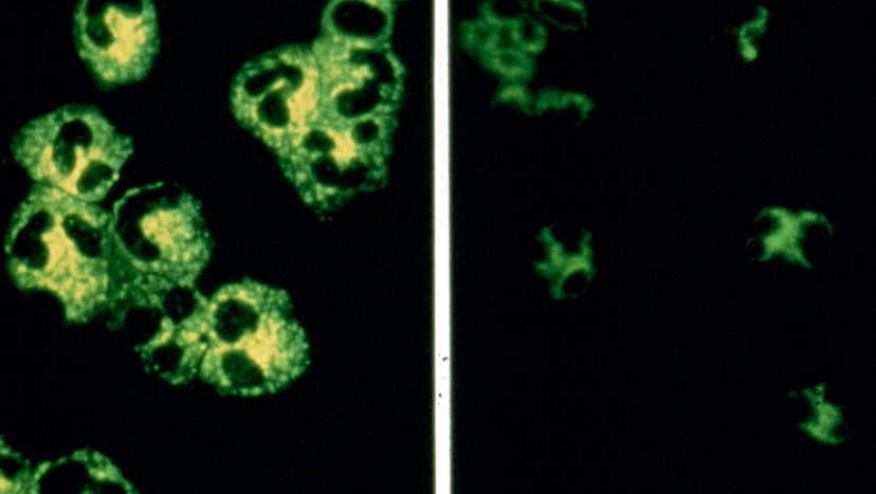Mortality Risks Shift in Granulomatosis with Polyangiitis Save

Mortality remains high in granulomatosis with polyangiitis (GPA), but the causes of death tend to change over time, a researcher reported here.
During the first year after diagnosis of GPA, the most common cause of death is active vasculitis, according to Fiona A. Pearce, MBBS, of the University of Nottingham.
From years 1 to 5 after the diagnosis, the most frequent cause is cardiovascular disease, and from years 5 to 10, malignancy is the most common cause, she reported at the annual conference of the British Society for Rheumatology.
A total of 1,350 new cases of GPA are diagnosed each year in the U.K., and 11-14% die within a year. "A recent survey of patients with vasculitis showed that what they really wanted is the honest truth about what's going to happen to them after the diagnosis," she said.
Previous research has been limited by small numbers and a short duration of follow-up. The aim of this study was to assess survival and causes of death, and hopefully, provide information on how to improve survival, Pearce said.
Data were obtained from the Clinical Practice Research Datalink, which contained primary care records of 13 million U.K. residents. All patients who were diagnosed with GPA from 1998 to 2014 were included and matched with up to 10 controls.
The analysis included 465 newly diagnosed patients who were typical of a GPA population; median age was 61 at the time of diagnosis, and 57% were male. Median follow-up was 3.9 years, and 50 cases had more than 10 years of follow-up.
Overall there were 139 deaths among the GPA patients.
Survival at 1 year post-diagnosis was 85.5% (95% CI 81.9-88.4) in cases compared with 97.3% (95% CI 96.7-97.7) among controls, and at 5 years, the survival rate was 72.7% (95% CI 68-76.9) among cases and 88.1% (95% CI 87-89.1) for controls.
At 10 years, survival had declined to 53.3% (95% CI 45.8-60.2) for cases and 76.2% (95% CI 74.2-78.1) for controls.
During the first year, mortality was very high, Pearce noted. During the first month after diagnosis, patients were 24.5 times more likely to die compared with the general population. During months 1 to 2, the risk of death was 14.6 times higher; during months 2 to 3, the risk was 7.5 times higher; and during months 3 to 6, the risk was 4.3 times higher. "This is a reminder that it's important to diagnose GPA early and treat promptly."
But then, the risk seemed to level out, so that until year 8, the risk was only 1.6 times higher. After year 8, however, the risk increased again, so that patients were 3.2 times more likely to die compared with the background population.
There have been improvements in mortality over time, however: For the first part of the study period, 1998 to 2007, the hazard ratio (HR) for death was 7.1 (95% CI 4.8-10.5), while for years 2008 to 2014, HR declined to 4.7 (95% CI 2.9-7.5).
As to the specific causes of death, during the first year, 40% of deaths were from active vasculitis, while 31.7% were from cardiovascular causes. From years 1 to 5, a total of 37.5% of deaths were cardiovascular, 22.5% were from malignancy, and 10% were from active vasculitis.
During years 5 to 10 post-diagnosis 30.3% of deaths related to malignancy, while 18.2% were from vasculitis and 15.2% were cardiovascular. "Although malignancy was the leading cause of death during years 5 to 10 for cases, the same was true for controls, and probably reflects the age of the patients," Pearce said.
Then, from years 10 to 15, a total of 33.3% of the deaths were cardiovascular, and 16.7% each were from infection, malignancy, and vasculitis.
Mortality remains high in GPA, especially in the early years. In subsequent years, mortality-reduction strategies should additionally focus on reducing the risks of death from cardiovascular disease and infection, she concluded.
Limitations of the study, the researchers noted, included the small numbers -- GPA is a rare disease -- and a lack of detailed information on individual patients, so the team was unable to look for associations between clinical phenotype and risks.









If you are a health practitioner, you may Login/Register to comment.
Due to the nature of these comment forums, only health practitioners are allowed to comment at this time.